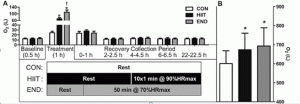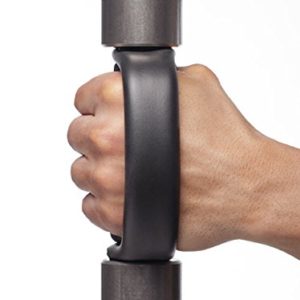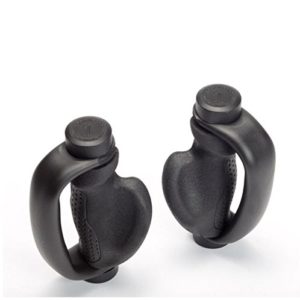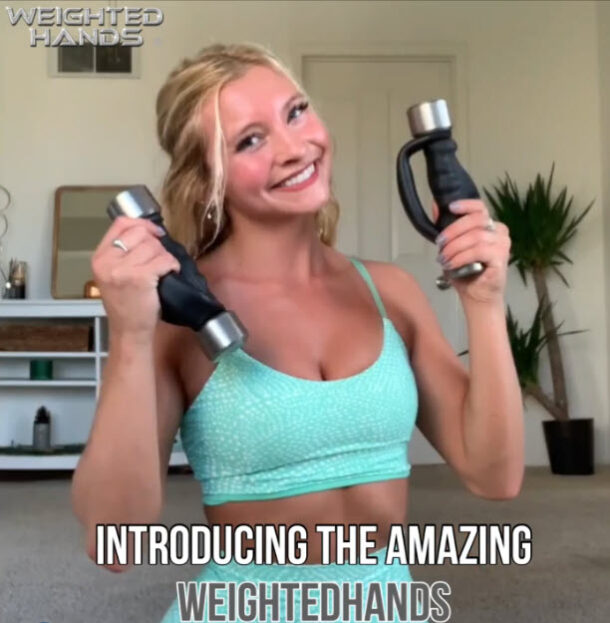HIIT or LISS
Suppversity is a brilliant blog to read… Here’s one of their latest articles on fatburning you should read for yourself:
It’s not only worth reading, but thinking through in light of Dr. Leonard Schwartz’ philosophy of Panaerobics because – as you know – Dr. Schwartz approved of and encouraged the use of intervals and brief workouts, but NOT in the ways they are conceived in light of the modern discussions about “High Intensity Interval Training” and total exercise time.
(Just so we’re all on the same page “HIIT”, again, stands for High Intensity Interval Training. “END” stands for “endurance training” which for this study’s purposes are the same as “LISS” = “Low Intensity Steady State” exercise.)
To be sure, in his patent filings on strength endurance method he began discussing shorter workouts. As he aged, he tried to maintain higher intensity for 10 to 15 minute spans – but several times per day, usually daily!
As you’ll see from the article HIIT advocates are talking about very high intensity for short duration three to four times per week.
The above fact is worth noting because as Dr. Schwartz’ thought progressed from HeavyHands to Longstrength and IsoTonoMetrics he did talk more frequently about shorter but more intense workouts and “slowaerobics”.
The “HIIT” (High Intensity Interval Training) was not part of the discussion in those days, but for some important reasons he spoke in terms of longer and “panaerobic” i.e. “4 limb” exercise engaging as much muscle as possible.
Let’s REVIEW the findings of the latest research and then COMMENT on them in light of Dr. S’s exercise philosophy because some will read the “headlines” or about the HIIT theory in general and mistakenly assume that “HeavyHands”, Longstrength, or IsoTonoMetrics have been “disproven” when they have not!
First what are the findings?
Image Courtesy Suppversity Blog
When comparing a “High Intensity Interval Training” program of 10 – 1 minute intervals at 90% of maximum Heart Rate to 50 minutes of endurance training (aka “Low Intensity Steady State” or LISS training) at 70% of maximum heart rate with both administered three times per week after a short warm up. They were compared to a control group that did no exercise.
The bar graph shows that over a 24 hour period the HIIT group (black bar) used almost as much oxygen as the Low Intensity Steady State (LISS) group (gray bar).
Oxygen use in this study is a proxy for “fat burning” or “calorie burning” or “endurance building”. So the headlines based on this study will read “10 minutes of HIIT exercise as powerful as 50 minutes of cardio”.
There are some caveats however.
- Just for the sake of comparing “apples to apples” it’s important to check the total time involved and the goal involved. Though the time of “10 minutes” stands out, overall training time was 20 minutes because of the active rest between the intervals. So actual training time was 20 minutes, three times per week, versus 50 minutes per week.
- The blog notes that previous research had shown that HIIT and LISS produce similar body composition changes :”The HIIT and END protocols were selected, because previous research has reported similar changes in body composition between HIIT and longer (40–60 min) bouts of END (Macpherson et al. 2011).” In other words the different workouts had approximately the same results as far as changing relative proportions of fat and muscle.
- The HIIT exercise alone is not, evidently, that good for building overall muscle (at least any better than LISS!). It’s assumed readers of the blog will be wanting some additional overall muscular development.
How many minutes will that add to the workout? Readers of the summary were warned that adding 3 HIIT sessions a week to a 3 times per week resistance training plan could severely overtrain them. In that case, adding the lower intensity cardio might be preferable.
So, unless one is doing HIIT with “whole body” exercises like “burpees with pushups”, “man makers with dumbbells”, or – as we know – some form of “HeavyHands” work to exercise broad bands of muscle while using HIIT, something else must be ADDED to build a package of overall muscle, strength, and endurance. The relatively short times devoted to HIIT must be supplemented some form of resistance to build the overall musculature!
So how does this relate to Dr. Schwartz’ theories on “Panaerobics”?
A direct comparison is impossible, but some comments seem in order.
- Direct comparison is impossible because Panaerobics aren’t simply a variety of “cardio” … Panaerobics’ goal is to build an overall package of fitness traits which create appropriate muscle and enduring strength. But it’s likely 20 minutes of “HIIT Panaerobics” using 4 limb exercise and appropriate resistance via HeavyHands, Longstrength Calisthenics, or IsoTonoMetrics would be better at producing the “package” of results sought by fitness enthusiasts if carried out for the same intervals at the same heart rate. That would help avoid the dilemma of “should I do HIIT for cardio or resistance training for muscle?”
- While HIIT is being promoted as a time saver, all the routines end up being longer than the few moments people mention in the “headline”. But if the shorter timeframes of HIIT actually keep you from being able to achieve other fitness goals – such as those presumed available via resistance training by the Suppverisity blog – is time really being saved in the long run? Take note how the author of the article is basically saying that 3 resistance workouts plus off days with “LISS” cardio may be better. How does that save time?
- Dr. Schwartz thought exercise should be FUN… as a psychiatrist he believed that would aid long term compliance and participation in training. Is HIIT fun? You can talk about “seeking pleasing results instead of pleasing processes” all you want, but obviously things would be better if both the results and the processes were pleasing! As one fitness writer once observed “You know you’re doing Tabata’s [a form of HIIT] properly when you’re about to throw up!” If that’s not your idea of “fun” exercise, it might pay to do a slightly longer less intense panaerobic workout of some sort that you can enjoy!







Recent Comments